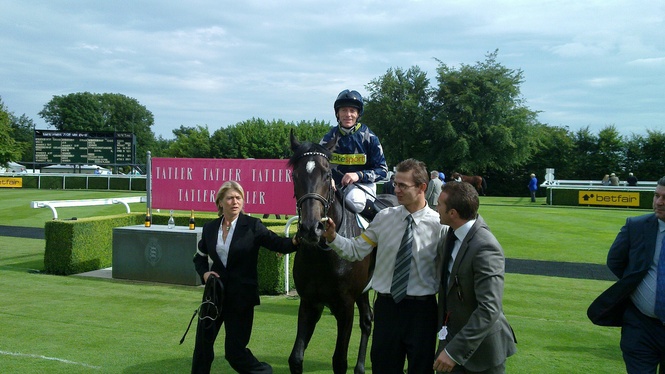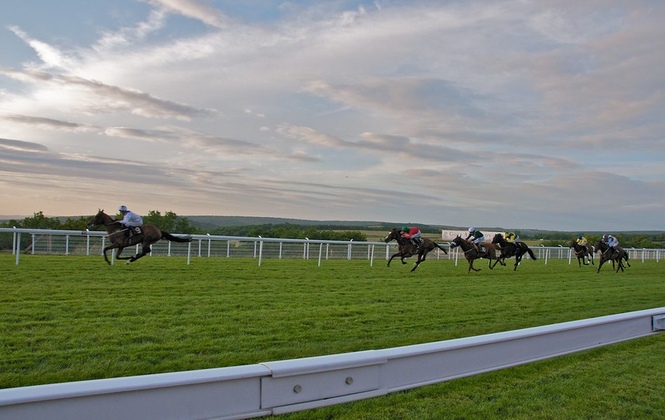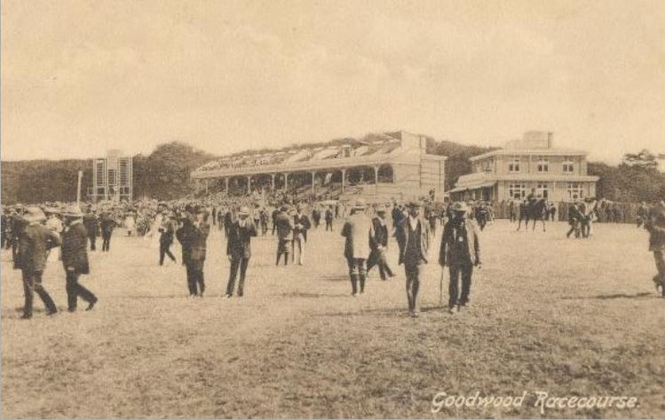Glorious Goodwood
Glorious Goodwood offers racing fans five days of top class flat racing action. While it is not quite up there with Royal Ascot, there are still some fantastic races to watch and bet on.
The five day Glorious Goodwood festival usually takes place in late July each year. With the Sussex countryside as a fitting backdrop, this festival is seen by many as their chance to turn on the style – while trying to pick out a few winners in the process. Viewed as slightly more relaxed that the well to do Royal Ascot, Glorious Goodwood attracts a wide range of punters.
With seven races running on each of the five days, Tuesday to Saturday, there is plenty of racing action to enjoy.
Glorious Goodwood – Main Races
The British Flat racing season is jam packed with Summer Festivals, from Chester to Epsom, Royal Ascot and beyond. For many though the best of the lot comes down in Sussex in early July with the annual Glorious Goodwood gathering. A little more relaxed in the stands than Royal Ascot, the races on the track are nevertheless red-hot and here we take a quick look at the best of the bunch.
There are plenty of highly competitive races for punters to enjoy at this festival; here, though we give brief details of the best races on offer in terms of history and prestige.
The Lennox Stakes

The Lennox Stakes is a Group 2, 7 furlong race first run in 2000.
It took a while for the owner of Goodwood racecourse to have an event named in his honour at the track’s most famous festival, but the Duke of Lennox was finally granted that honour in the year 2000 with this contest.
7f specialists perhaps aren’t quite as well catered for over the course of the season as those who thrive at sprint or one-mile trips, but Goodwood doesn’t forget them with this Group 2 affair.
One of the opening day highlights of the meeting, the contest is open to horses aged three and above and has been won by such talents as the inaugural winner, Observatory, and Paco Boy who later went on to sire 2000 Guineas winner, Galileo Gold.
The Sussex Stakes
The Sussex Stakes is a Group 1, 1 mile race first run in 1841.
Named simply after the county which acts as home to Goodwood racecourse, this event has evolved from being a run of the mill 6f juvenile contest upon its inception in 1841, to now being the race most synonymous with the Glorious Goodwood Festival.
A sprint event no more, the conditions of this Group 1 were altered to become a one-mile contest for horses aged three and up in 1878 and have remained that way ever since.
Brigadier Gerard, Giant’s Causeway, Rock of Gibraltar, Henryhthenavigator and more all feature on what is a stellar roll of honour. Only one horse has won the race twice though. No prizes for guessing his name. It is of course the incomparable Frankel, who landed the prize in both 2011 and 2012.
The Goodwood Cup
The Goodwood Cup is a Group 1, 2 mile race first run in 1812.
When you think of these big flat meetings, speed is perhaps the first attribute that springs to mind. The runners who embed themselves into the public consciousness the most though are the gritty, determined stayers. These stamina laden performers get their chance to shine in Sussex with this historic event.
The two-mile trip the race is run over no doubt takes plenty of getting, but the runners have it easy when compared to those to have competed in the early 3m version of the race. The current trip only being introduced in 1991.
Held on the opening day, the contest acts as leg two of the British Stayers Triple Crown, a trio of races which is completed by the preceding Ascot Gold Cup and subsequent Doncaster Cup.
Superstar stayers; Yeats, Further Flight, Le Moss, Big Orange and Persian Punch have all won the race twice, but the tough as teak, Double Trigger tops the lot with three wins between 1995 and 1998.
The Betfred Mile

TheBetfred Mile is a Group Heritage Handicap, 1 mile race first run in 2003.
Its not all about the Group Class performers at Glorious Goodwood. As with the other big summer festivals, the handicappers are also given ample opportunity to grab their chance in the spotlight. No where more so than in this event which is regularly targeted by the big British yards.
This Class 2 Heritage Handicap is held over the one-mile trip and is invariably one of the big betting heats on the fourth day of the festival. The race has been the scene of some successful gambles over the years, including Franklin D in 2015 who was backed all the way in to 7/4f before getting the job done to the delight of punters.
King George Stakes
The King George Stakes is a Group 2, 5 furlong race first run in 1911.
Now over 100 years old, the big sprint contest of the Glorious Good festival is steeped in history. Brought into being in order to honour the crowning of King George V, this Group 2 event is held over a fast and furious 5f trip.
The great Lester Piggott certainly enjoyed his spins around Goodwood and racked up a mightily impressive record in this contest, coming home in front nine times between 1958 and 1984. A record which no other jockey can match.
A number of speedsters have landed the prize on two separate occasions over the years including Abernant back in 1949-50 and Take Cover in more recent times . Most famous of all though is the flying filly Lochsong who added this race to an impressive career haul in both 1993 and 1994. As of 2017 we are still awaiting our first three-time winner in the race.
The Nassau Stakes
The Nassau Stakes is a Group 1, 1 mile 1 furlong and 192 yard race first run in 1840.
It paid to be close to the Duke of Richmond back in 1840. Certainly if your goal was to have a horse race named in your honour anyway. The title of this contest is derived from the Duke’s close ties with the predominantly Dutch political order of the House of Orange-Nassau.
Held on day three of Glorious Goodwood, this is the festival’s premier event for the fillies and mares and attracts the crème de la crème from both the classic generation and the older performers year after year.
It is the younger performers who tend to dominate in this contest, particularly those to have earlier gone well in the 1000 Guineas at Newmarket. Russian Rhythm, Winter and Minding just three to have done the double over the years. Most successful of all though is the Sir Henry Cecil trained Midday who won three in a row between 2009 and 2011.
The Stewards Cup
The Stewards’ Cup is a Heritage Handicap, 6 furlong race first run in 1840.
Having initially been permitted to award a trophy to the winner of any Glorious Goodwood contest that took their fancy, the stewards at the track were finally granted their very own race in 1840 in the form of this full throttle 6f sprint heritage handicap.
It may not be the highest-class event of the week, but this event – held on the concluding Saturday – is undoubtedly one of the biggest spectacles of the meeting. Regularly seeing 25+ runners go to post, this is the race for which the term cavalry charge could have been invented. Expect much talk of draw bias, and where the pace lies, as a prelude to what is more often than not a thrilling finish.
Despite the vast field, the favourites actually have a pretty good record here over the years. That’s not to say there hasn’t been the odd boil over though, including 50/1 shots, Ahonoora and Madraco who came home in front in 1978 and 1987 respectively.
The most talented winner award goes to Lochsong who burst onto the Goodwood scene with victory in 1992.
Glorious Goodwood History
Horse racing arrived at Goodwood way back in 1802. The Duke of Richmond introduced horse racing to the Goodwood estate as a benefit for the Sussex Militia officers (he was their Colonel).
The first racecourse on the site was called “the Harroway”, which initially hosted a two day meeting. They soon expanded to a three-day meeting, under Jockey Club Rules. The Duke even won a race on the first day of the three day meeting on a horse named Cedar.
It wasn’t until after the Second World War, that the popularity of Goodwood racing took off. The July Meeting – what is known now as Glorious Goodwood – attracted some 55,000 racegoers in 1953.
Now one of the most well-attended and popular race meetings in the world, Glorious Goodwood continues to grow. With new, lucrative sponsorship deals and increasingly popular races, we anticipate Glorious Goodwood will get evermore popular still in the 21st century.


